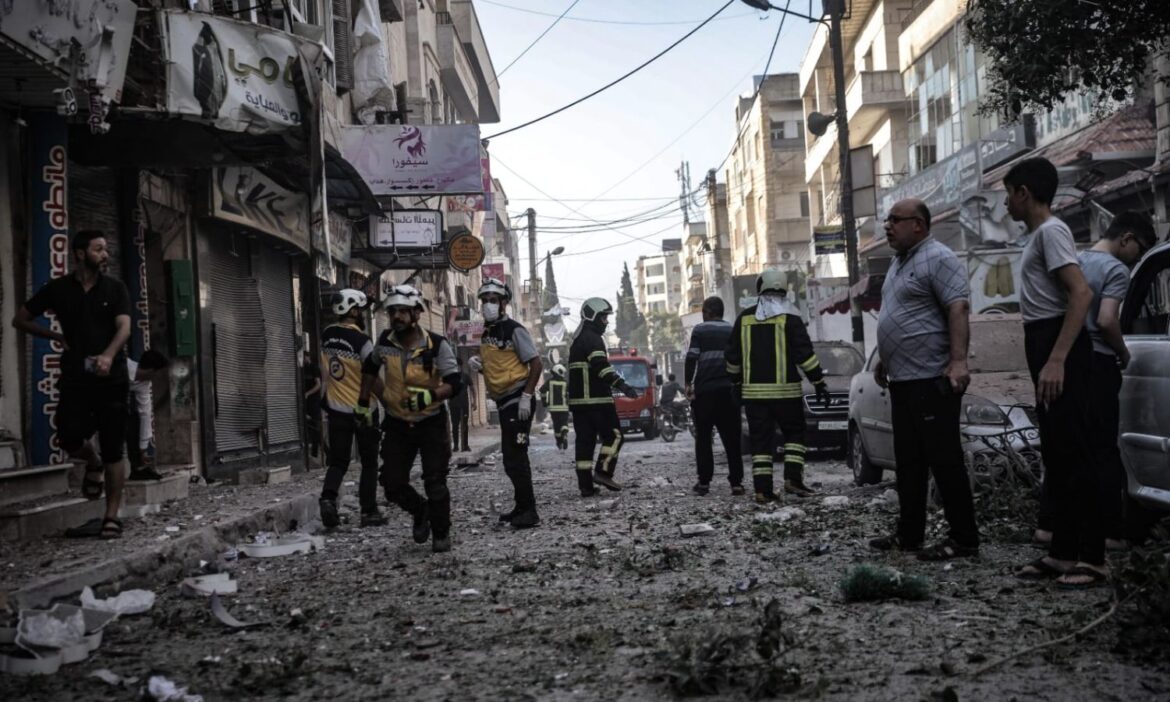“Many fall wounded and dead that day. I do not know their names. Our grief is huge impairing our ability to focus.”
With these words, a local of Idlib province, northwest Syria, described the state of shock that followed a bombardment by the Syrian Army on his town, Sarmin, on 8 October 2023, to which he lost his 8-year-old daughter, Laila.
This attack was one of a series of bombardments carried out as part of a large military campaign by Syrian and Russian forces in northwest Syria, currently under the control of rebel armed groups, including Hay’at Tahrir al-Sham (HTS). The campaign started on the 5th of October and lasted until the 27th. Reportedly, the Syrian government (GOS) forces used cluster munitions and incendiary weapons in attacks on several sites in Idlib and western Aleppo, taking advantage of the international community and media’s preoccupation with the war in Gaza.
On 6 October alone, Syrian-Russian attacks on the centre of Idlib killed seven civilians, among them two children and a woman, and wounded 52 others, including 19 children and 12 women. Similarly, arterially shelling by the GOS forces on Qarqor village in Hama on 22 October left five children dead, three of whom are brothers.
The attacks caused significant damage to important services and infrastructure, such as hospitals, schools, as well as power and water plants. This has put at least 4.5 million people in northwest Syria at risk of losing access to these vital services. The situation is particularly dire for those who have already been displaced or are residing in the area, as they are struggling to meet their water needs.
United Nations Office for the Coordination of Humanitarian Affairs (UNOCHA) released a report on 27 October 2023, documenting the Syrian-Russian force’s use of artillery and air strikes against 2,300 locations in Idlib and western Aleppo. These attacks resulted in the displacement of over 120,000 people; some of them had already been displaced once before, at least. Syrians for Truth and Justice (STJ) verified that 24 of these attacks left civilian casualties, including a large number of children. Statistics by STJ show that the Syrian-Russian campaign resulted in the killing of 56 civilians, including ten women and 20 children, and the injury of 252 civilians, including 46 women and 72 children.
Notably, while the Syrian-Russian bombing campaign was taking place in northwestern Syria, Turkish forces were using drones to launch a similar violent campaign in northeastern Syria. The Turkish campaign, which started on 5 October and lasted for five days, severely damaged critical infrastructure and resulted in water and electricity disruptions for millions of people, local and displaced, exacerbating the years-long water crisis.
On 24 October 2023, Paulo Pinheiro, the Chair of the Independent International Commission of Inquiry on the Syrian Arab Republic, made a statement at the UN General Assembly condemning the widespread violence that has swept many parts of the country, saying, “We are witnessing the largest escalation of hostilities in Syria in four years. Yet again, there appears to be total disregard for civilians’ lives in what are often tit-for-tat reprisals.”
For this report, STJ’s field researchers interviewed six sources in northwest Syria. Three of the sources testified about the killing of their relatives in attacks targeted al-Masbah Camp, also known as Ahl Saraqib Camp, and the three others talked about the damage caused to critical infrastructure in the area, including Sarmin power station and three water plants.
Children and IDPs are Among the Victims
On 8 October, two shells hit a street in Sarmin, killing the 8-year-old Laila. She was heading with food to her grandmother’s basement home, which she used to shelter in from bombing. Laila’s father testified to STJ on the incident, saying,
“Barely two or three minutes after Laila’s departure, we heard an explosion near the house. We ran to the bathroom out of fear. I was about to leave home when a second shell fell [nearby]. I quickly ran outside; a neighbor said that a young girl carrying food had been injured at the end of the street, and some people took her to the [al-Muhafaza] hospital. I rushed to the hospital, where a nurse told me that there was a girl inside who had lost her leg. I responded by saying that ‘what matters is her being alive.’ [However,] I entered and found Laila dead. The shell turned her into pieces.”
After losing his daughter to a bombardment, Laila’s father decided to flee hostilities with his family, which put him under a big financial burden. He recounted,
“I rented a house for $70 a month. I did not find a job where I moved. The bombardment [on our town] used to come from regime-held areas. My daughter [Laila] was very afraid [of the bombardment] and she always asked [me] to leave home [together] and escape. We had nothing but this house in the town, and my livelihood and work were there. [However] the bombardment took Laila; she has gone, and we left home and fled.”
On the evening of 8 October, Mahmoud, 13, lost his life to an artillery shelling targeted the industrial area on the Sarmin-Idlib road. Mahmoud was there helping his father as he used to do on holidays. Mahmoud’s uncle (source 2) elaborated for STJ on this incident, saying,
“My brother, father, and I each have a maintenance marginal on the Sarmin-Idlib road; we cannot afford to open stores. On Thursday, 8 October, we were working in the industrial [area] which consists of cluster of marginals with customers [usually] spread among them, the regime artillery shelling started on Sarmin. That was usual, but the unusual was shelling the industrial area or targeting it. When the first shell landed in the area, we rushed [to hide] in the car repair pits. Then, two shells fell between the marginals, and one was very close to us. My nephew was afraid and did not know how to react, so he hid behind a rock, but shell fragments hit him and killed him. Two workers were injured, one from Sarmin and the other from Saraqib.”
The same source confirmed that the regime’s artillery shelling was wide and targeted the power station on the other side of his workplace (location) with three shells, which led to electricity going out for 24 hours. The source suggested that the shelling came from Saraqib and explained,
“It was from Tall ar Ruman (location), 3 km from Saraqib on the Aleppo-Damascus highway, better known as M4.”
The source said that he based his suggestion – on the bombardment source – on information obtained from aviation observatories that monitor the movement of warplanes and bombardments in northwest Syria.
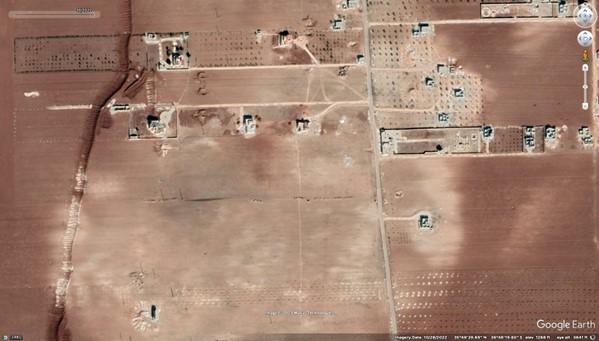
Image 1- Sites of the GOS forces, 30 km south of Saraqib city.
On October 24, at approximately 12 pm, a fighter jet (believed to be Russian, according to local sources) targeted an Ahl Saraqib Camp, 1 km to the west of al-Hamamah village (location), administratively part of Jisr al-Shughur city. This camp was established by displaced people (IDPs) from al-Agr village in the Ghab Plain in 2017. The camp accommodated 50 families, comprising 300 individuals, who were forced by the airstrike to flee once again.
The raid killed five people from the camp: two women, a girl, and two infants, and severely wounded four others: an elderly man and three children; one of them received shrapnel in the head lodged in the brain. Those killed and wounded were of one family.
The raid also led to the injury of an elderly man who works as a guard in a swimming pool near the camp; the pressure generated from the shelling caused a wall to fall on the victim, and he was, therefore, transferred to the hospital.
STJ’s field researcher was able to identify the casualties:
The dead,
Rahaf Khaled al-Aliwi, 22, with her infant child Ahmed Alaa al-Aliwi, 1.5, Malak Khaled al-Aliwi, 18, with her infant daughter Ghazal Ali al-Aliwi, six months, and Adla Abdullah al-Hammoud, 80, who is the maternal grandmother of the two previous victims.
The wounded,
Victim Adla’s husband, Mohammed Ali al-Aliwi, 91, Hossam Damen al-Aliwi, 9, Abdullah Ali al-Aliwi, 2, son of victim Malak, Khaled Alaa al-Aliwi, 4.5, son of victim Rahaf, and the guard Mustafa Hijazi, 65.
A relative to the ravaged family (source 3) gave testimony to STJ about the raid and subsequent destruction. He said,
“The civil defence took the dead and wounded from al-Yacoubiyah center to al-Rahma Hospital in Darkush town. Those killed were died instantly. They received injuries in the head; the shrapnel lodged in fatal points in their brains.”
The source added,
“Most of the camp residents work in harvesting olives. Most of the camp’s men were out working when the raid occurred. Only women, elderly men, and children were in the camp.”
The raid not only left casualties but also massive devastation in the camp, which led to the displacement of its residents for the second time. The source explained,
“When the missile fell, it blew up about ten tents, and we found no trace of them afterward; all the pipes and fabric were torn, destroyed, and flew. The great pressure from the missile caused the remaining tents’ pipes to bend and break. The camp was abandoned because it was destroyed and to prevent it from being targeted again. The camp’s residents were relocated to a shelter center that was not properly equipped [to accommodate them]. They are currently staying with their relatives, and there is no alternative to the camp [available at this time].”
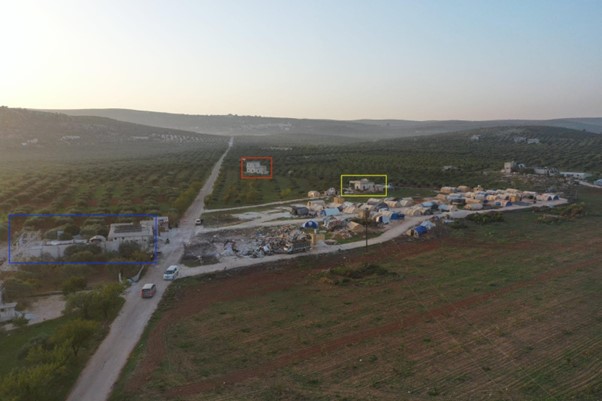
Image 2- A side of the damage caused to Ahl Saraqib Camp by the 24 October attacks. Credit: Syria Civil Defence (The White Helmets).
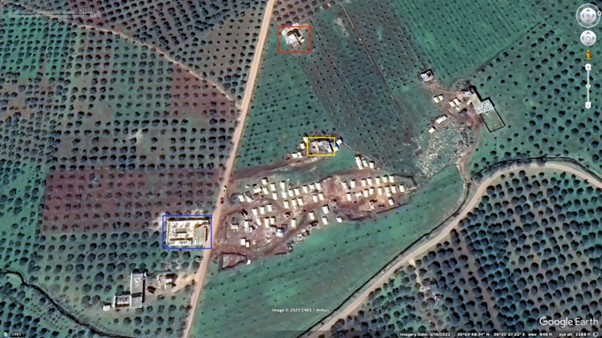
Image 3- Matching a ground image of Ahl Saraqib Camp with a satellite one.
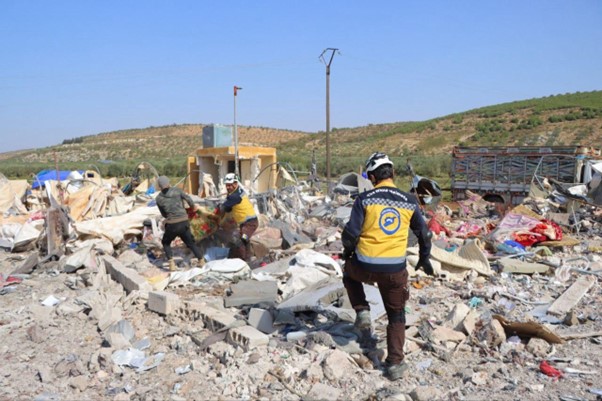
Image 4- A side of the damage caused to Ahl Saraqib Camp by an air strike believed to be Russian on 24 October 2023. Credit: Syria Civil Defence’s Telegram channel.
Targeting Critical Infrastructure
The violent offensive of Russia and the GOS into northwest Syria did not spare civilian sites like residential buildings, IDP camps, and critical infrastructure. STJ documented huge damage in two schools, a main power station, and three water plants in Idlib, rendering them inoperable. Moreover, the continued bombardment prevented maintenance teams from accessing these facilities.
-
Two schools in al-Tawameh village
On the evening of 8 October, three artillery shells hit a primary school in the al-Tawameh village located in western rural Aleppo, causing severe damage. A member of the teaching staff at the school, (source 4), reported on the bombing reason saying,
“The schoolyard suffered significant damage when a shell fell into it, leaving a large hole. The main entrance door, as well as the windows and doors, were also damaged as the door was taken off and the windows’ glass shattered due to the pressure resulting from the shell explosion.”

Image 5- A hole in the ground of the primary school in al-Tawameh village, western rural Aleppo, after being hit by an artillery shell. Credit: The witness/source no.4.
The middle school in al-Tawameh village was also shelled on 9 October. The school was hit at midnight and the teachers panicked, leading to a decision to close schools for a week. As well, artillery shelling hit several houses in the village, causing severe injuries to an elderly woman, which led to her being paralyzed. The source confirmed that the shells in the two attacks were fired from military points of the Syrian regime in Mount Simeon. The source elaborated on targeting the middle school, saying,
“The bombing hit two classrooms, destroyed them completely, and dislodged the doors and windows. [Mercifully], the attack occurred at midnight and not during the day, or the number of child casualties would be disastrous. Therefore, we decided to suspend schools for a week for fear of repeated bombing.”
The two targeted schools have still not been assessed for damage or received maintenance work as of November 11. This situation poses a major challenge to the educational process, especially given the harsh winter conditions and the region’s lack of security and stability. The Syria Civil Defence (The White Helmets) has documented 23 joint attacks by Russian and GOS forces on schools and educational facilities in northwest Syria from the beginning of 2023 until the end of November 2023.
-
Three water plants in Idlib
On 25 October, missile attacks and concentrated artillery strikes targeted three water plants in Idlib: the Carlton station, which is named for the Carlton Hotel in Idlib; the civil defense station near the Syria civil defence center; and Taoum village station.
An employee from the Idlib Water Unit (source 5) stated that the recent attacks on the water stations in Idlib were carried out by Syrian regime forces in Saraqib. The attacks occurred at night, so there were no casualties among the employees at the targeted facilities. The three stations are underground wells from where the water is drawn by electric pumps, which work on generators and solar panels. The water is then pumped into the network pipes to serve the area with clean water. The Carlton Station, in particular, has been severely damaged due to the attacks, as described by the source,
“The station’s building was severely damaged, in addition to damage to the generator and the diesel tanks serving it.”
The bombing rendered the station inoperable until at least 11 November, as the maintenance teams could not fix the generator that the station relied upon. As a result, approximately 5,000 individuals in Idlib have been deprived of access to clean water, as per the same source.
The Carlton station suffered the most damage, but the other two stations were also impacted. They experienced a significant decrease in their pumping rates, which affected a large number of residents who rely on these facilities. As for the civil defense station, the source reported,
“The impact on this station was not as severe as the one at Carlton. Its solar panels and external building were damaged. [However], it remained operational but its ability to extract and pump water into pipes decreased by 75%. As a result, approximately 10,000 people were affected [by the shortage of water supply].”
Regarding Taoum village station that experienced similar damage to its solar panels, which are responsible for its operations, the source said,
“The production of water has decreased by around 35%, which has impacted nearly 5,000 individuals.”
-
Sarmin power station
According to the analysis and evidence collected by STJ, it seems that the GOS and Russian forces deliberately attacked several civilian objects without the presence of any military targets in the vicinity. This includes the Sarmin power station, the main station in Idlib, and the one responsible for supplying electricity to several cities and towns, including Ariha, Ma’arrat Misrin, and Sarmin. The attackers targeted civilian objects and aimed at the maintenance teams trying to fix the station and the electricity extensions in the affected residential areas.
On 8 October, three artillery shells hit the Sarmin power station. On the consequences of this attack, an employee from the General Electricity Company (source 6) testified,
“It led to damage to insulators, cables, electrical boxes, and the water well located within the station. We began the maintenance process inside the station. In the evening, the Syrian regime targeted maintenance personnel with a rocket launcher, which hindered the immediate maintenance process.”
The bombing damaged the area surrounding the station building, which affected the outlets that supply Sarmin, Ariha, and Ma’arrat Misrin. Due to the ongoing bombings and severe damage, the maintenance teams could not attend to any malfunctions in the Ariha outlet until 48 hours later.
According to the same source, the ongoing bombing since 7 October resulted in malfunctions in the networks that distribute electricity to villages and in electricity meters and boxes of the buildings and homes targeted. As such, repairing these damages has proved to be a difficult challenge for maintenance teams. The source explained,
“Maintenance teams suffer from moving under bombing and being targeted while working. Targeting Sarmin’s high-voltage station, low-voltage station, power poles, and the distribution network is a deliberate attempt to deprive the region of electricity.”
The same source stated that the GOS forces are intentionally targeting the electricity networks in Idlib with the aim of “Taking away reassurance from its people” who have already been suffering from power outages. For the past ten years, Idlib’s people have been relying on generators for electricity until it was recently imported from Türkiye and distributed through a network that was established before 2011 and rehabilitated recently.
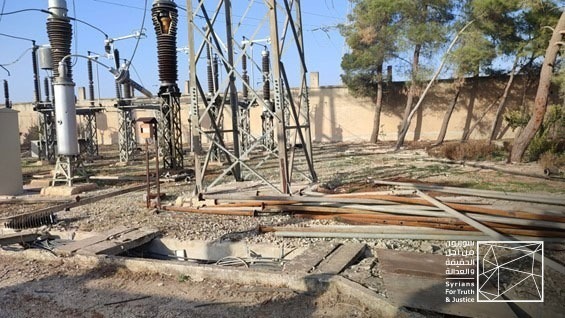
Image 6- A side of the damage caused to Sarmin power station by arterially shelling of 8 October 2023. Credit: The previous source.
Reprisal Bombardment
The GOS forces launched the latest offensive on Syria’s northwest following a drone attack on a military college in Homs province during a graduation ceremony on 5 October.
Reports by the GOS said that the attack killed 89 people, including women and children from the graduates’ families and several military personnel, and wounded others. Reporting on the event, Reuters quoted an unnamed source saying that the attack occurred “minutes after Syria’s defence minister left the graduation ceremony.”
Although no one claimed responsibility for the attack directly or later, the GOS hastened to bomb northwest Syria.
In a statement cited by state-run SANA News Agency, the General Command of the Syrian Army and Armed Forces blamed “armed terrorist organizations supported by well-known international parties” for Homs’ attack and vowed to “respond with full force and determination to these terrorist groups wherever they are, and stressed that the planners and executors will be held accountable”
In turn, the head of the Russian coordination center in Damascus and Central Region, Major General Vadim Collet, detailed the offensive on northwest Syria in a joint Syrian-Russian press conference with the Director of the Political Department of the Syrian Arab Army, Major General Hassan Suleiman. Collet noted that the offensive included more than 230 air airstrikes and over 900 artillery missions on rebel sites, which resulted in the death of 200 terrorists.
In its report issued on 5 November, Human Rights Watch (HRW) verified the use of cluster munitions and incendiary weapons in two areas in Idlib. The intensive bombing campaign on Idlib lasted through at least October 30.
In the same vein, HRW and Bellingcat verified the use of incendiary weapons by the GOS in its attacks on Darat Izza town, western Aleppo, between 6 and 7 October 2023. Bellingcat’s initial analysis of videos showing incendiary weapons and other artillery on social media suggests that Russian Grad Rockets, specifically 122mm 9M22S, were used to shell the town of Darat Izza in early October.
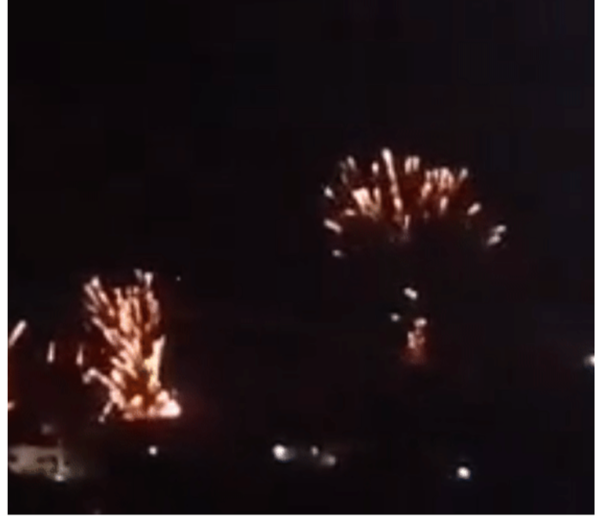
Image 7- Explosions over a town in northwest Syria on 6 October. Credit: Bellingcat.
It is relevant to recall that there is a historic record verifying the GOS’ use of cluster munitions and incendiary weapons in its attacks on opposition-controlled areas: in 2022, the HRW documented the GOS use of cluster munitions in Idlib; in 2017, Amnesty International documented the GOS use of Soviet-made cluster munitions in its attacks on Eastern Ghouta. Notably, Syria and Russia have not ratified or signed the 2018 Cluster Munitions Convention, which bans the use of these weapons.
Legal Commentary
It is striking that the Syrian authorities confirmed that more than 1,130 uses of air strikes and artillery shelling resulted in the killing of 200 “terrorists,” as they described it. Let’s say for the sake of argument that the attacks targeted military objects and led to the death of 200 fighters; this is legitimate according to international humanitarian law, but the same law established conditions and limitations for such targeting. It is not enough to consider any military operation compliant with international humanitarian law simply because it led to eliminating military targets. Instead, every military attack must be evaluated against specific criteria that take into account military necessity, differentiation between civilians and military personnel, differentiation between civilian objects and military targets, proportionality of damage likely to be caused in relation to the military advantage expected from the attack, and the implementation of necessary and effective measures to minimize losses and injuries to civilians and civilian objects.
Any military attack must follow the principle of distinction, which means that the attack must not be random and must be directed only against known and specific military targets. Regarding the response to the drone attack, the decision of the Syrian and/or Russian forces should be based on identifying legitimate military targets rather than targeting entire areas simply because they are under the control of a hostile party that the attacking forces hold accountable for the drone attack. It is worth questioning the accuracy of the targeting operations carried out by the Syrian military, given that they claimed to have used a significant military force to achieve a rather small target of 200 fighters. This raises questions about whether the attacks were directed towards the intended targets or were random and inaccurate. These concerns are further compounded by the disproportionate number of civilian victims and the damage inflicted on the infrastructure necessary for their well-being.
In this context, infrastructure facilities are considered civilian objects and, hence, are protected from being targeted per the principle of distinction. However, they gain additional protection when they offer civilians necessities and essential services such as safe drinking water and energy for the healthcare system.[1] Therefore, if the attacking party decides to direct its attacks against military targets adjacent to infrastructure critical for the population’s survival, it must take special care. This is because the harm that may be caused to the civilian population due to collateral damage to these infrastructures may outweigh the expected military advantage gained from the attack itself.
Attacks on civilian infrastructure are strictly prohibited and require additional protection standards. Although civilian objects may be utilized for military purposes and lose their protection under international humanitarian law, any attack on them must comply with the principles of proportionality and precaution. Deliberately targeting electricity and water stations and schools cannot be justified as part of an attack on areas under enemy control. For instance, designating an entire water treatment facility as a military target just because of the presence of a few military personnel is not justifiable unless there is conclusive evidence that those military forces are utilizing the facility to launch attacks or store ammunition.[2]
International humanitarian law is a set of rules that governs the conduct of parties involved in an armed conflict. It should not be used to justify the actions of any party. It is important to evaluate each armed attack individually, considering the principles of distinction, proportionality, and precaution. Therefore, the 1,130 uses of armed force resulting in the elimination of 200 fighters cannot be considered a legitimate military activity or a response to military necessity. It is clear from the presented report that the attacking forces intentionally caused widespread damage instead of focusing on eliminating specific military targets. This is evident from the number of casualties, including dead and wounded, and the impact on basic infrastructure, which is essential for the civilian population’s needs.
[1] See for example: “Protection of Civilian Infrastructure in Armed Conflict: A Comprehensive Q&A Guide”, Diakonia International Humanitarian Law Centre, November 2023. Accessed 15 January 2024.
https://apidiakoniase.cdn.triggerfish.cloud/uploads/sites/2/2023/12/231128_Protection-of-civilian-QA-ENG_.pdf
[2] Ibid., p. 7.

